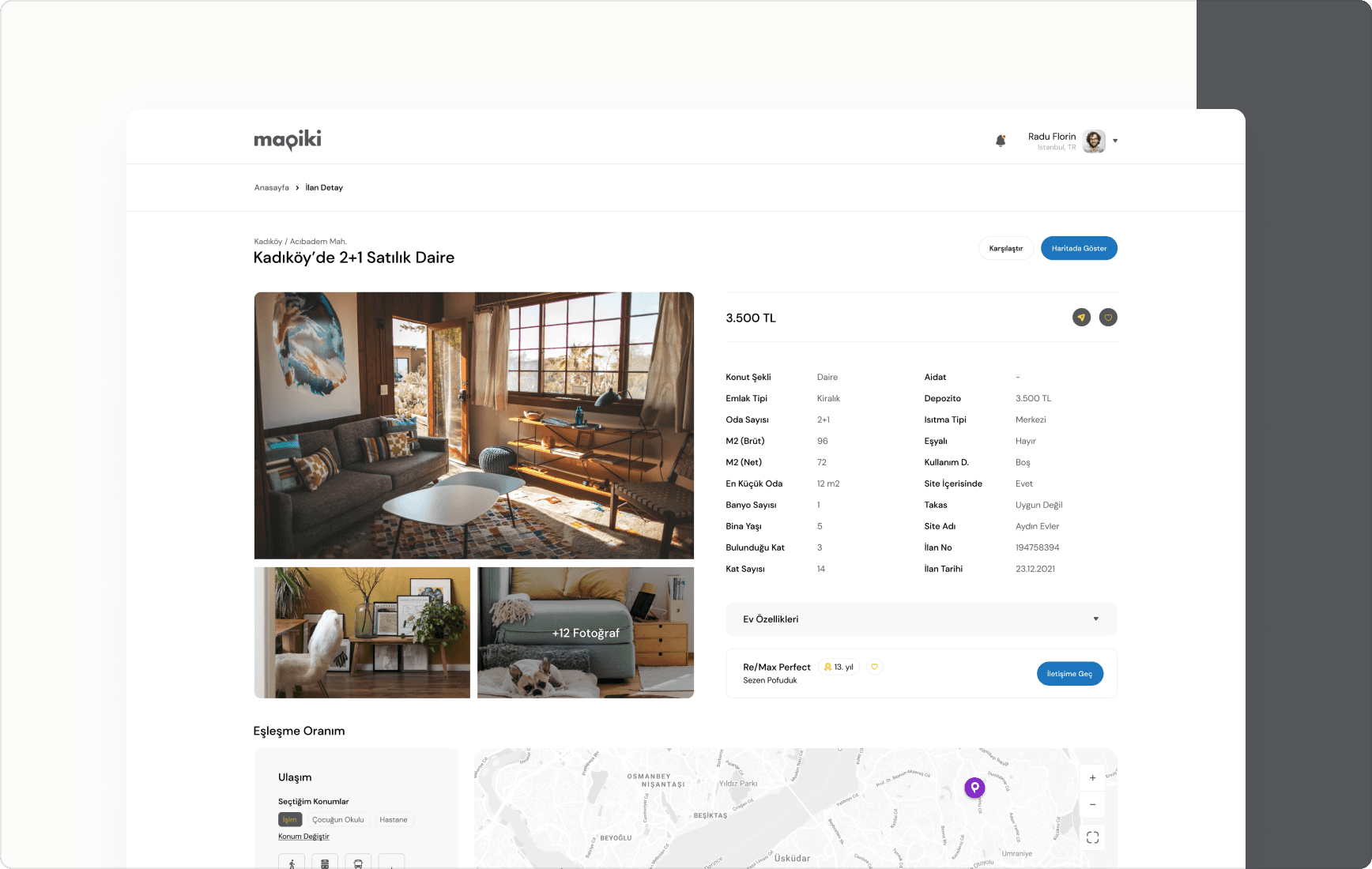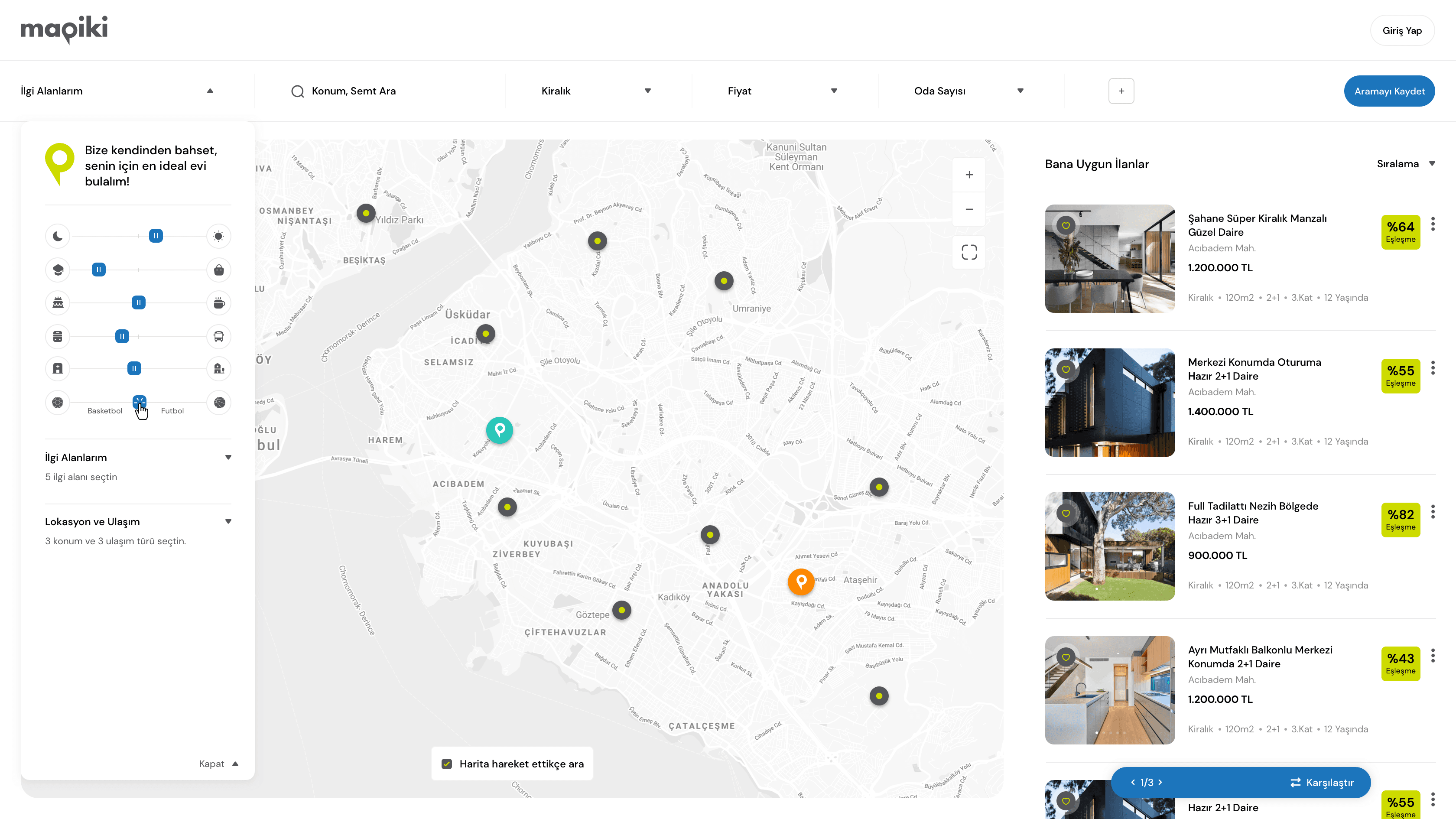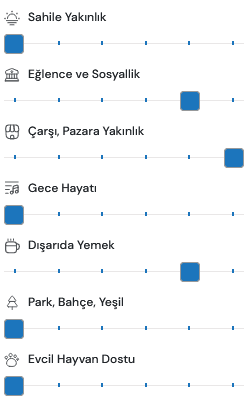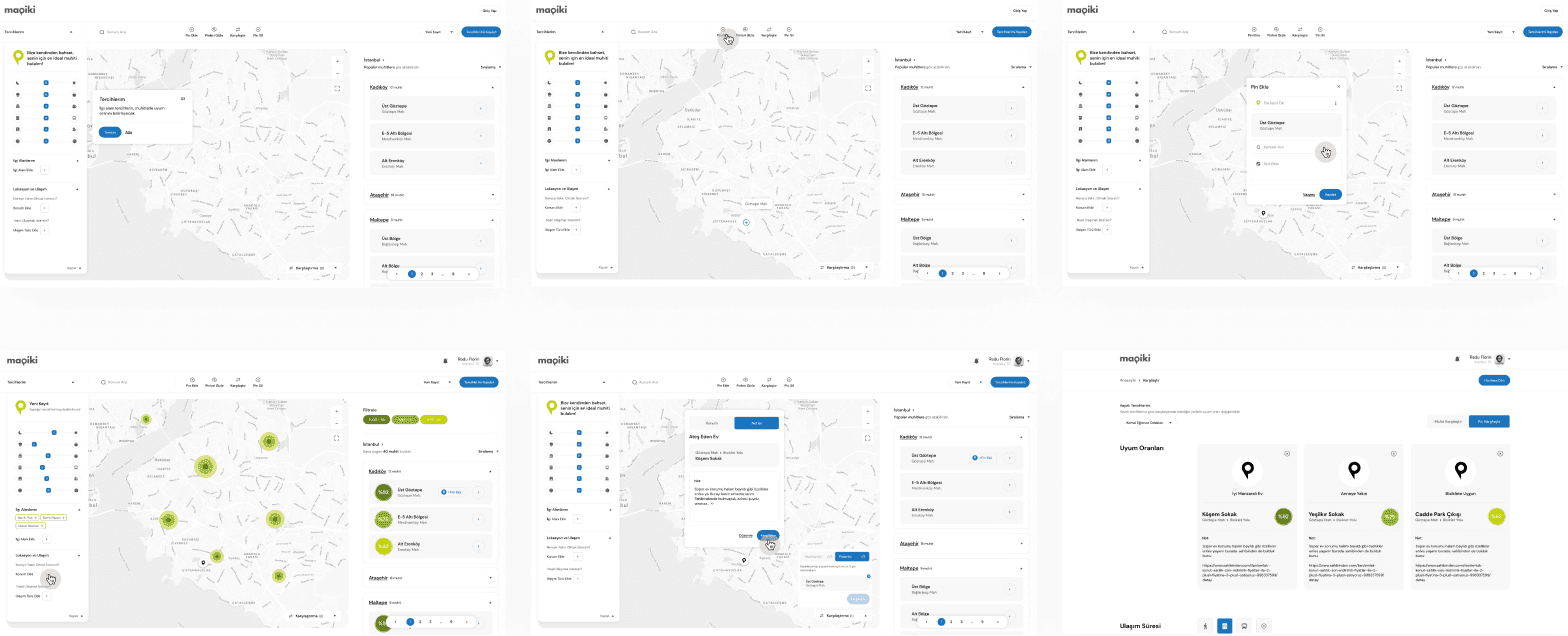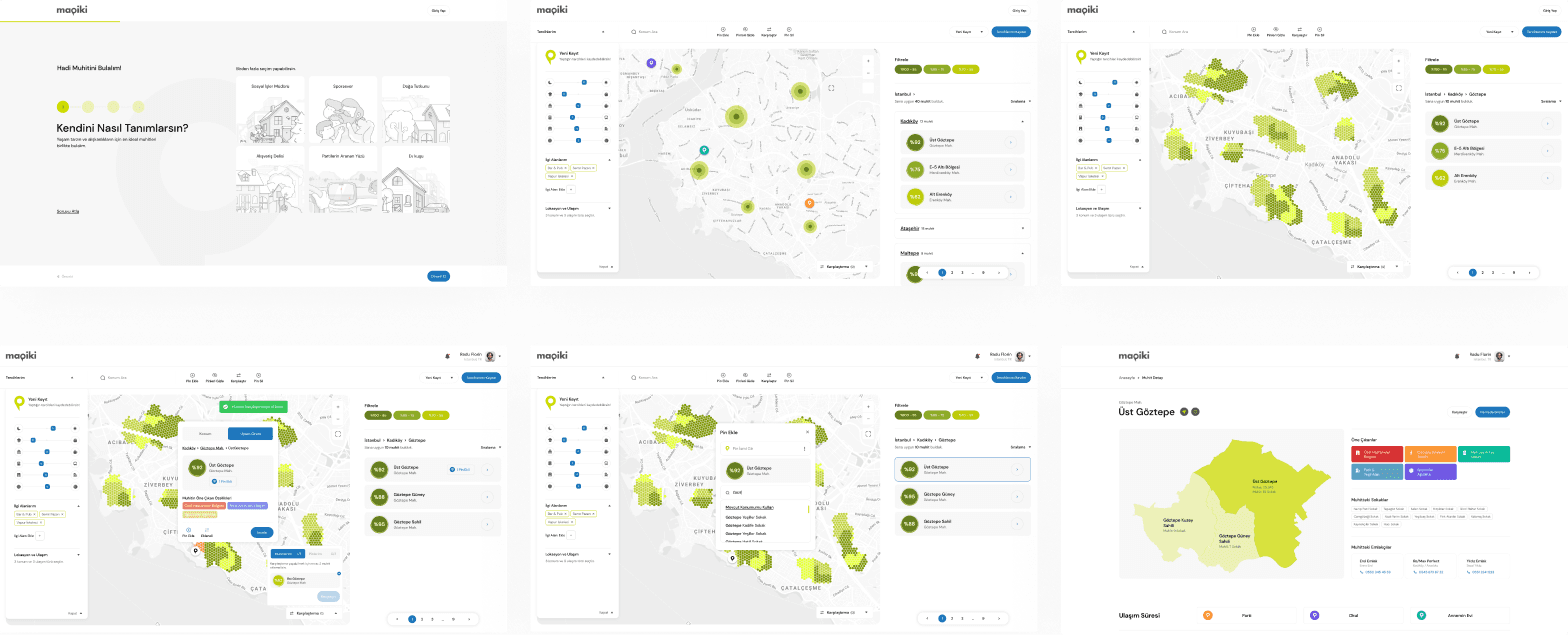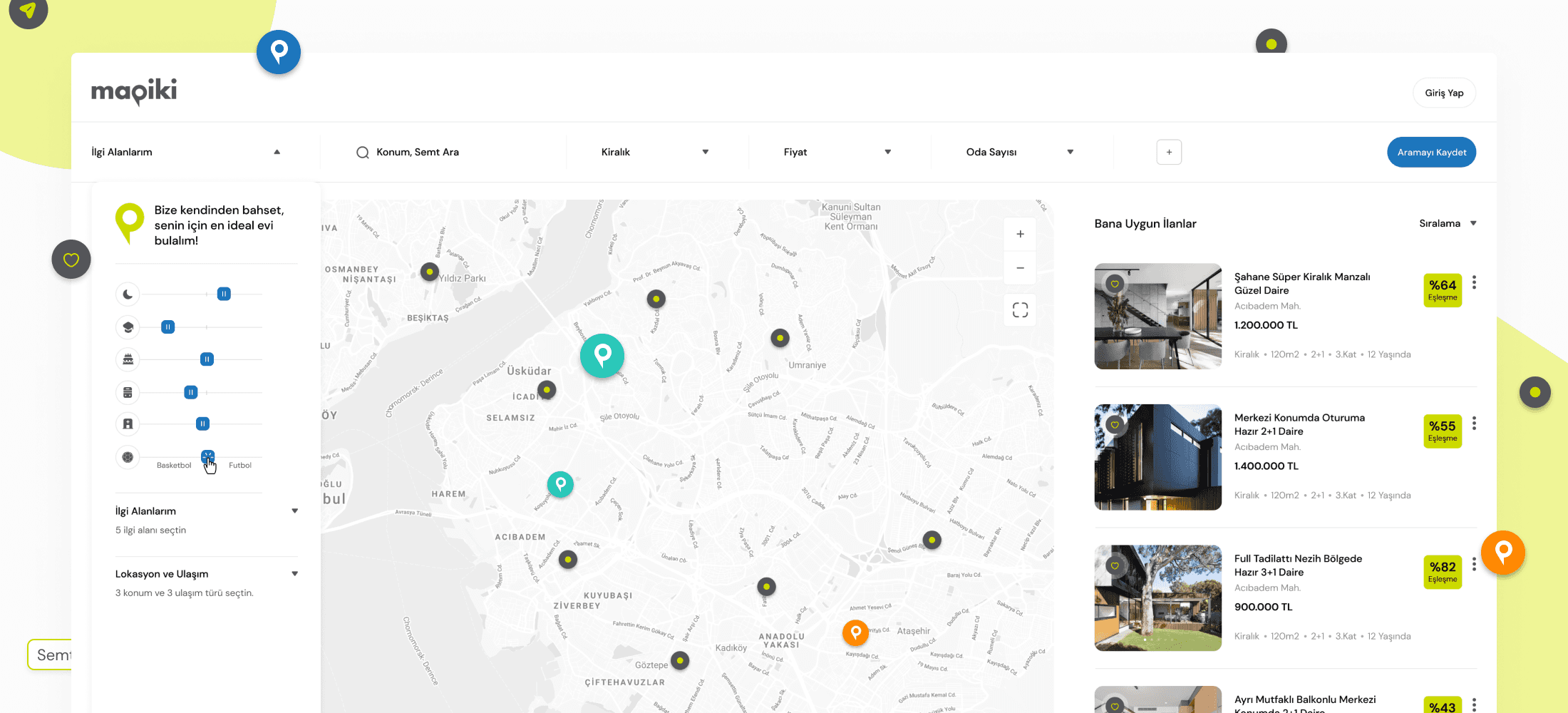
Mapiki
A startup challenges real estate industry with a new approach

Doga Dogan
Starring as UX Designer
Context
Mapiki is an innovative real estate marketplace leveraging location-based data to match customers with properties that perfectly align with their preferences and needs. Drawing on insights from their B2B ventures, Mapiki wanted to create a personalized, map-centric house-hunting experience. Our task was to develop their MVP, concentrating on a solution that optimizes and simplifies the home-finding journey. Nearing the project's completion, business constraints necessitated a pivot, leading us to develop an alternative version of Mapiki without listings. This unexpected shift resulted in the creation of two distinct versions of the product within the same project.
My role
UX Designer
Platform
Web
Timeline
2021-2022
Outcome
Reflecting on the extended collaboration for Mapiki, we achieved significant milestones:
Open Beta on 2 Cities
We were able to deliver the project successfully with the agreed timeline, after embedding links to listings, the client launched Mapiki in 2 cities. (Istanbul, Lisbon)
Partnership for Mobile App
Following the successful MVP delivery, our partnership with the client extended to develop a new app. Through a focused workshop, we outlined key features, targeted audience, and monetization strategies, laying the groundwork for the app's strategic development.
Understanding Home-Finders
To gain a better understanding about home searchers, we interviewed users about their living situations, home search habits, and platform use. We also asked specific questions about their views on privacy when sharing personal information, crucial for data-driven customization. From these interviews, we reached the following insights:
Guidance in Unfamiliar Neighborhoods
When searching in unknown areas or neighborhoods, users appreciate having guidance and recommendations. In situations where they lack knowledge, a system that offers supportive suggestions is highly valued.
Cultural & Lifestyle Community Fit
There's a strong desire for cultural and lifestyle compatibility in neighborhoods. Users are looking for communities where residents share similar values and lifestyles, including having entertainment spots and frequently visited locations nearby.
Subtle Information Usage
Users prefer their information to be used subtly but effectively, with personalization manifesting as suggestions while still allowing access to other options. They expect clear explanations for why their information is requested, favoring emotional over technical details (e.g., preferences like "I enjoy this" or "I'd like to see more of this style").
Simplicity in Filters
An excessive number of filters tends to overwhelm users, creating a perception of complexity. In crowded cities like Istanbul, budget and transportation filters become crucial. However, if users find a neighborhood they love, they are often willing to stretch their budgets.
How might we design Mapiki’s platform to intuitively guide users through their real estate search, ensuring they find properties that align not only with their practical needs but also with their lifestyle preferences?
Design Goals
After our discussion with the client, we've set forth a series of design goals that guide our approach to creating an innovative real estate platform. These goals form the cornerstone of our strategy, aiming to create a user-centric platform that stands out in the competitive real estate market.
Home Finder, Not Just a House Searcher
Mold Mapiki beyond the traditional bounds of a housing search tool, focusing on the concept of finding a 'home' that resonates with personal lifestyle preferences and values, rather than merely listing houses.
Data Harmony and Accessibility
Focus on making Mapiki's wealth of data approachable and user-friendly. Find solutions that would help presenting data in a way that is enlightening but not overwhelming, ensuring personalization is a natural part of the user’s path.
Guidance without Overstep
Aim to strike a perfect balance in information gathering – enough to inform but not to intrude. The approach is to be a subtle companion in the user’s journey on Mapiki, providing support and insight while respecting their privacy and autonomy.
Mapping the Experience
(no pun intended)
After setting our objectives, we began ideation with the client-provided data list, exploring and iterating various concepts. We then developed a simplified journey and wireframes. Our main goal was to focus on user’s experience at first as the realtor aspect of the project was not well-defined at the moment of our start. (This will get interesting in the next steps :) )This journey progressively guides users from initial engagement to personalized housing recommendations in four key stages, each building upon the last to refine the user's search and help them find their ideal home.
Know your Users
The journey begins with a concise quiz to capture the users' basic housing preferences and lifestyle choices. This initial interaction sets the tone for a customized experience throughout the platform.
Intuitive Map Experience
Home Listings by Match Score
Picking Perfect Home
In the final stage, users explore detailed pages of high-scoring listings, gaining insights into how each property aligns with their preferences and the neighborhood's demographics. For local users, Mapiki adds a unique feature allowing them to compare their current home with potential new ones, offering a clear, comparative view of the advantages and differences of each property.
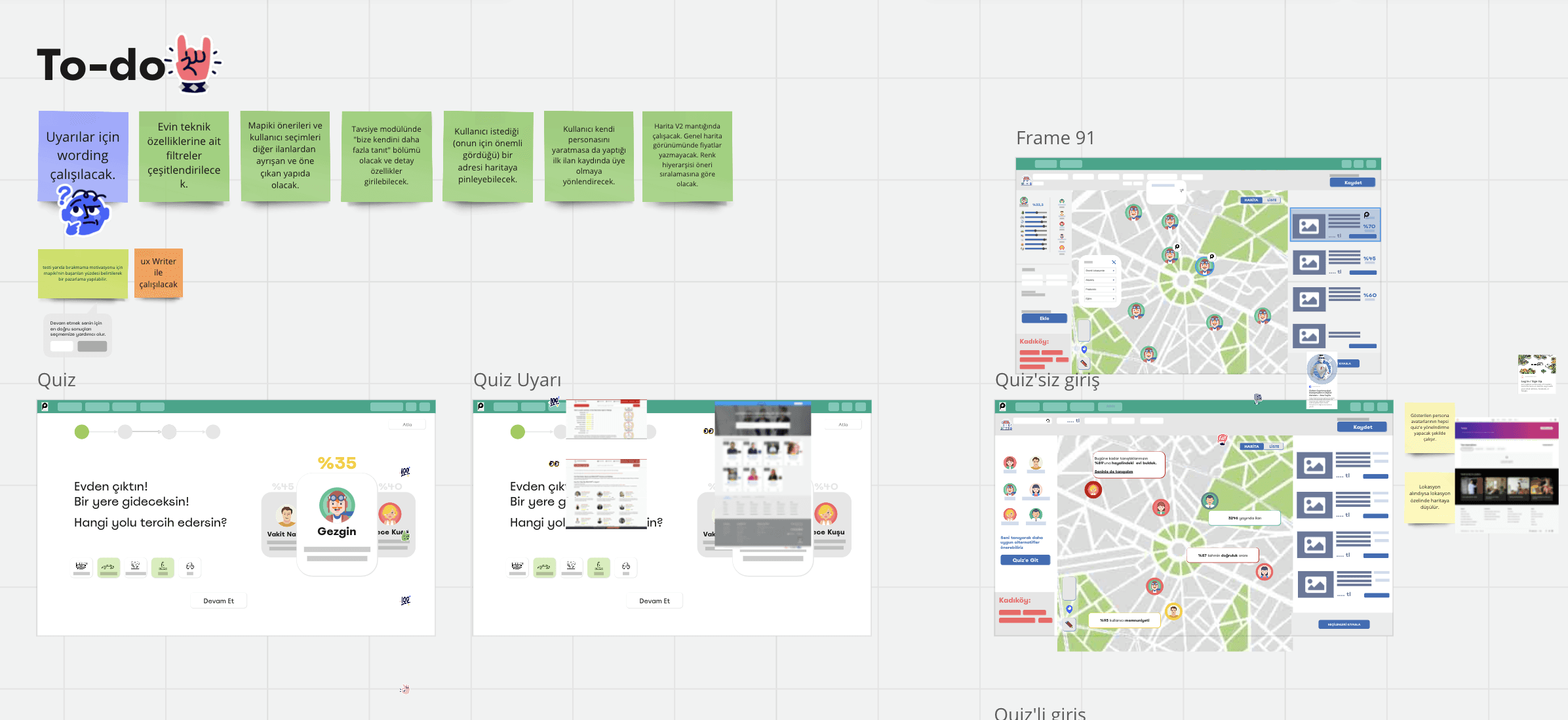
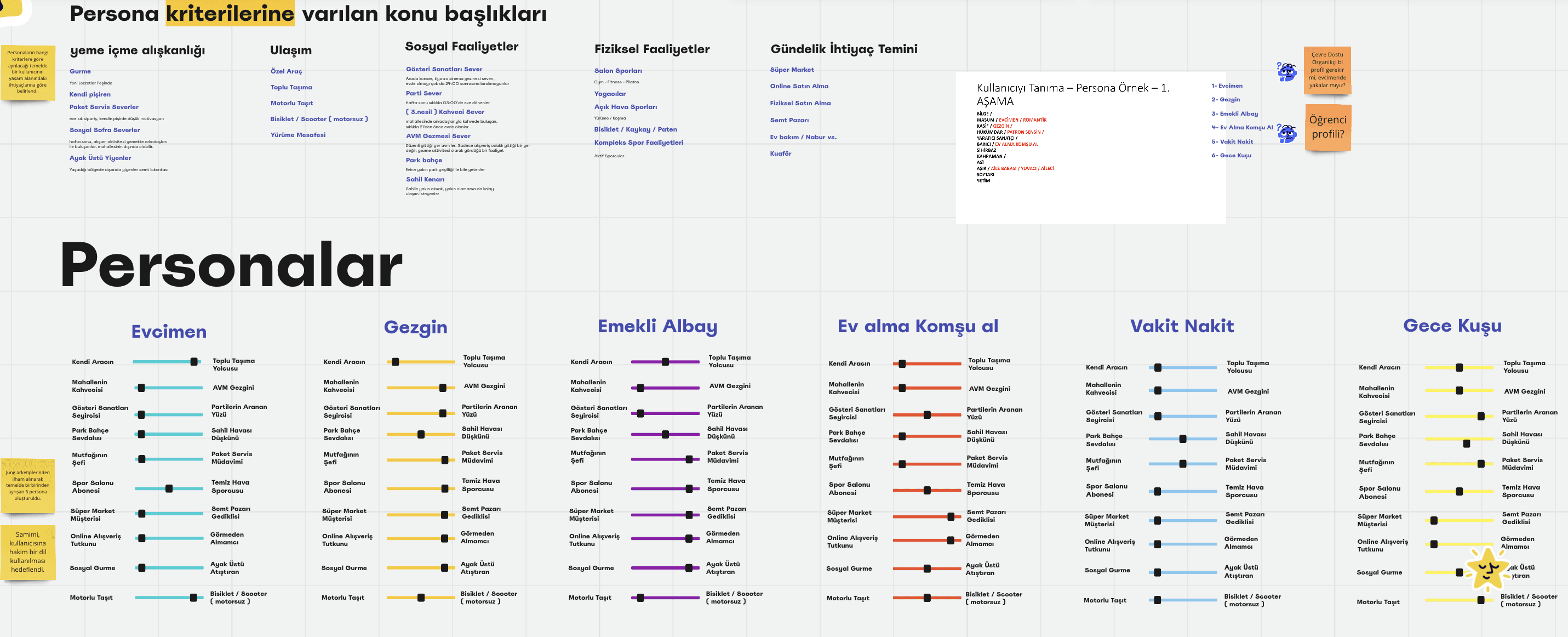

During the ideation process, we tried, grouping each data points, create personas with those datas, and created different layouts for best map experience.
Solution: Quiz and Data Collection
In developing the quiz for Mapiki, we brainstormed various questions and then collaborated with the client to identify which data selections would be most impactful for the map experience. After careful consideration, we settled on three key areas that would best demonstrate Mapiki's data capabilities.
Solution: Map Experience
To build the customization for users in the map, we put the data set Mapiki gave us into groups and used survey results for user needs which we then turned into "personas."
We picked slider mechanism as the primary customization tool on the map screen. Our goal was to empower users to define the significance of each data point in their house hunting, showcasing the impact of Mapiki's data through real-time map changes. However, during our client presentation, we encountered an insightful perspective: using personas might restrict user options as individuals often resonate with multiple data sets.
In response to this feedback, we refined our approach. We shifted the focus of the sliders to highlight one specific data point at a time and selected the seven most relevant data types, as identified by previous survey & research. Additionally, we included other data sets as selectable 'Points of Interest (POI)' filters, ensuring a comprehensive yet flexible map customization experience.
Outdoorsy
One data focused slider with label
Primary Personalization
Bar & Pub
Pazar
Chinese
Hamburger
Kozmopolit
+26
Lifestyle tags
Secondary Personalization
Breakdown of Map
Pivot Point: Adapting to Unexpected Changes
Current User Motivation
Picking Perfect Home
No Listings :(
What’s next?
New Motivation
After we completed the flows and passed them to our developers, we thought most of our work was done, and were eager to see the reception of our designs. However, we soon realized our journey was far from over. A couple of weeks later, the client informed us that they hadn't yet secured real estate listings, a critical component of our project, but urgently needed to attract investors. They challenged us to showcase Mapiki's data capabilities without the actual property listings.
Confronted with this challenge, we understood the need for creative problem-solving to restore the product's value for users. We collectively paused to reassess the entire project. This period of reflection opened doors to a range of possibilities, encouraging us to explore various solutions.
To tackle this unexpected turn, we adopted a collaborative yet individual approach. Each team member worked independently, brainstorming ideas and developing concepts throughout the day. We then regrouped to present our findings to one another, using these sessions as a springboard for refinement and innovation.
Rewind: How can we show the power of the data?
With house listings unavailable, my focus shifted to how we could use Mapiki to display neighborhoods in a way that resonated with users' lifestyles and needs. The challenge was in utilizing Mapiki's data, which was structured down to the street level within district divisions. However, since district divisions aren't commonly used in everyday discussions about locations, I needed to find a way for users to easily understand the areas they were viewing, while also conveying the depth and specificity of the street-level data.
Finding Motivation for Users
After long sessions and iterations as team, we focused on two main function of Mapiki without the listings.
1. Neighborhood Explorer: Mapiki now serves as a discovery tool for neighborhoods. Users can explore and learn about their current locale or uncover new areas that might suit their lifestyle. We implemented the 'Atomic City' model, clustering neighborhoods within their respective districts, a strategy grounded in our research that users typically start their search within familiar districts.
2. Personalized Pinning for Precision: Maintaining our commitment to precise matches, we introduced the ‘Add Pin’ feature. This allows users to mark and annotate properties they’ve found elsewhere on the web directly on Mapiki’s map. It’s a tool for users to track and compare different house addresses, enriching their search experience beyond Mapiki's native capabilities.
My inspiration for the atomic system in the Area Map drew from the functionality of in-game maps, guiding my design process across various iterations.
Breakdown of Area Map
Solution: Explore for your dream neighborhood
Scenario 1: As someone who needs to move because of house prices, I want to choose a new neighborhood that will fit my lifestyle choices and needs before starting my house-hunting process.
Solution: Add Pins and decide for the one
Scenario 2: As someone who picked several house options, I want to see which house would be a good fit for my lifestyle and needs.
Takeaways
Reflecting on our work with Mapiki, what really stood out for me was our team's collaborative spirit and efficiency, particularly when an unexpected challenge arose towards what we thought was the project's end. Our ability to swiftly exchange ideas and constructive feedback played a crucial role in finding a new direction for the project.
Another important thing was that, it reinforced my belief in the critical role of adaptability in design. The sudden shift in the project's scope was a stark reminder of the need to be flexible and resilient. It taught me the value of embracing change, staying open to new ideas, and the readiness to let go of previous concepts when they no longer serve the evolving goals of the project.

